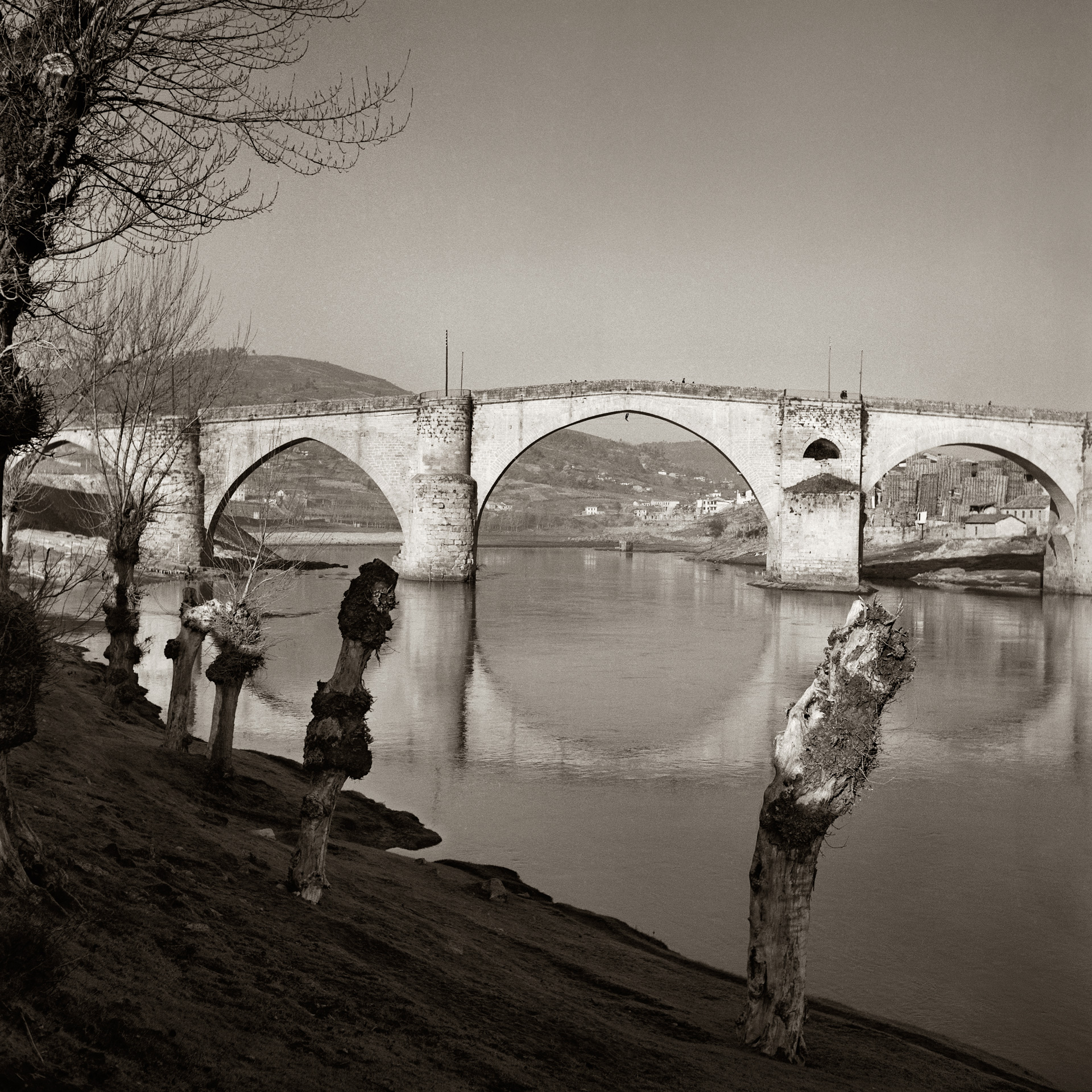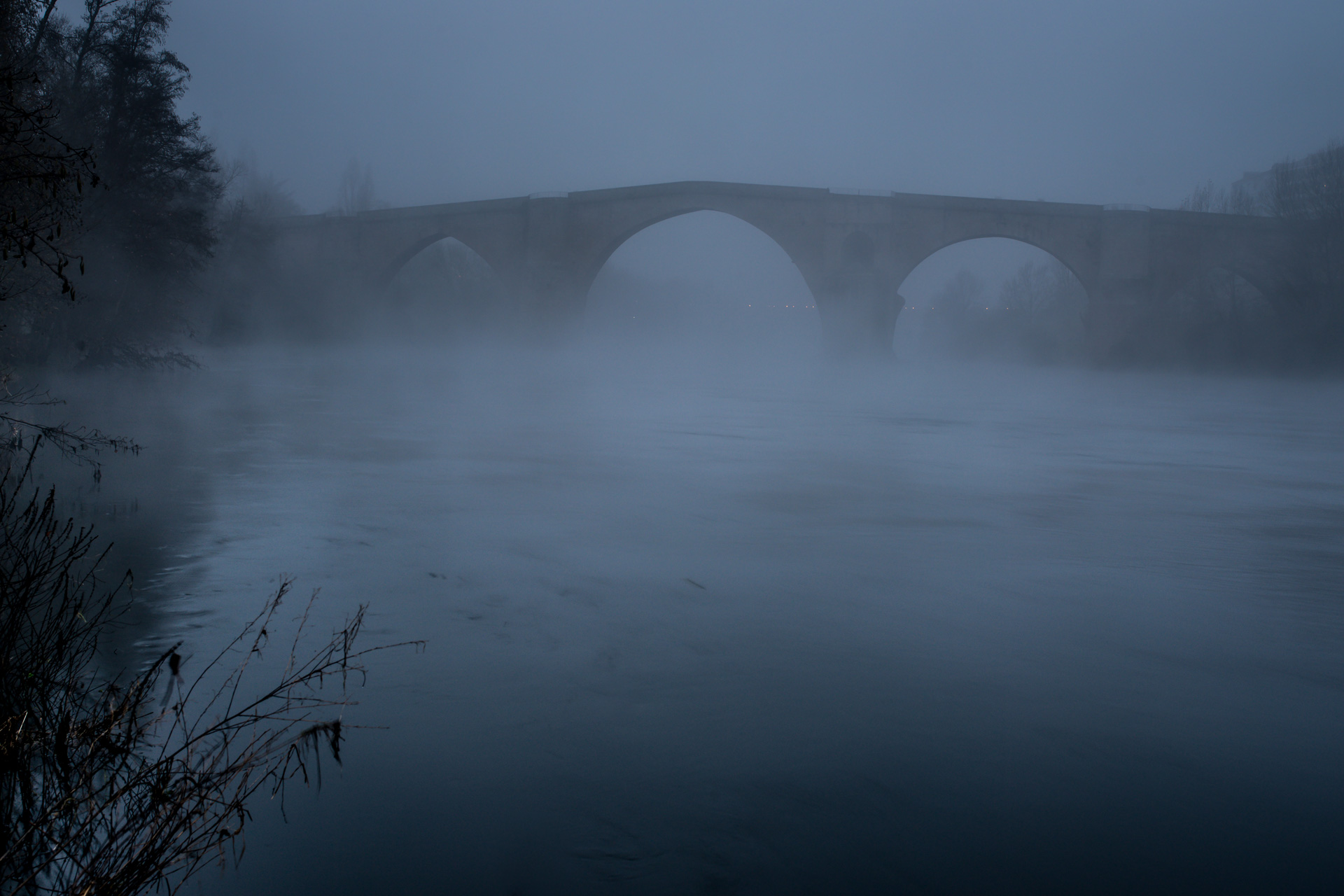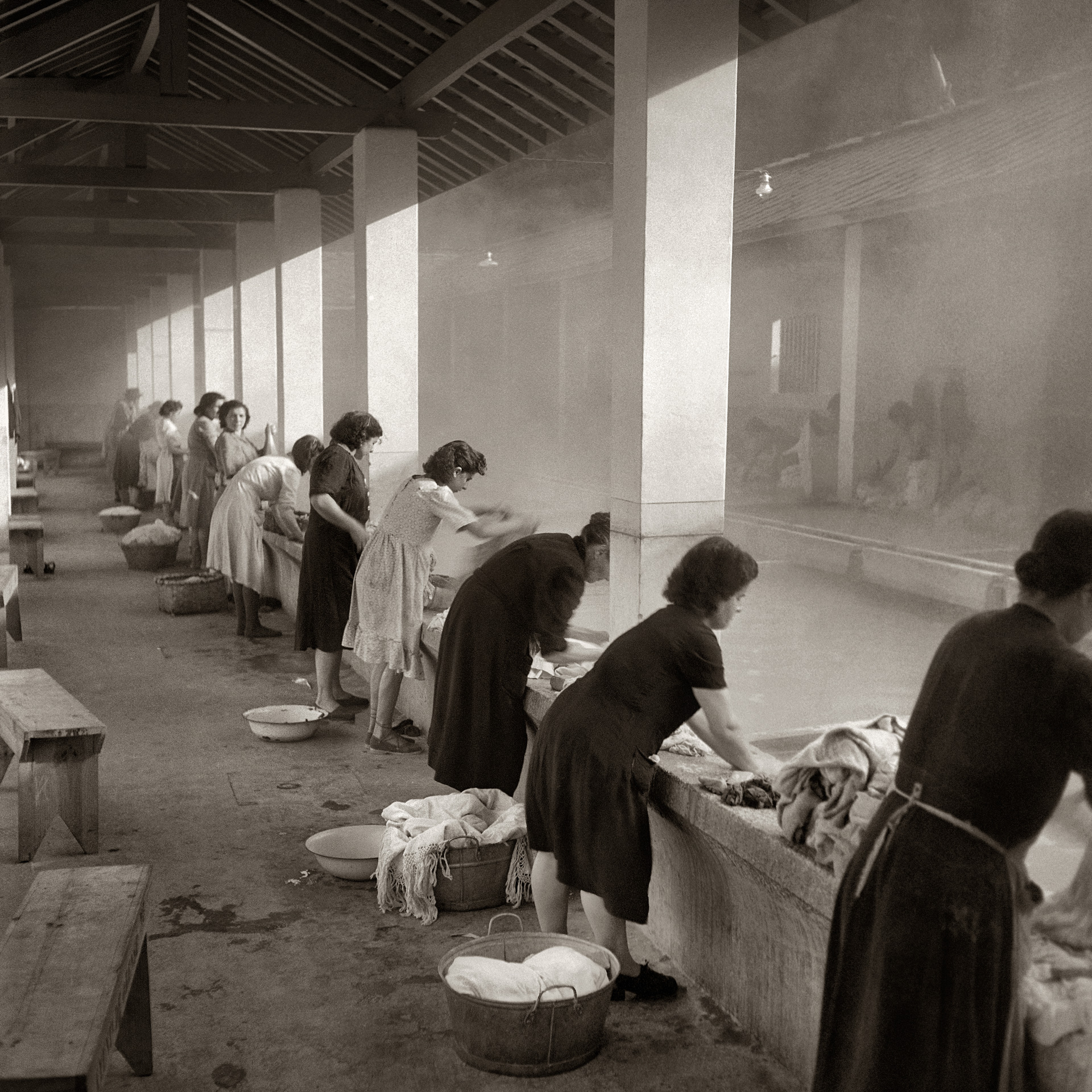
The Minho slowly flows through the city of Ourense. The painter Parada Justel, a member of the Generación Doliente [Suffering Generation] artistic movement, finds himself painting naked children on the warm summer stone. In the picture, the 19th century is coming to a close. Some of them peek out cheekily from the top of the bridge. It is the Roman bridge, the Puente Viejo, witness of the passage of time. Rare is the traveller who does not stop to gaze at it.
Roman bridge over the river Minho
Ourense, 1950-1957
Archivo Regional de la Comunidad de Madrid
Fondo Nicolás Muller
Pastor dos amenceres,
chegas a Ourense e paras,
aquédaste nos xugos das seus pontes
e coma un boi sumiso amansas
o teu andar, a túa presa antiga
de escuma apresurada,
para ollar a cidá calmosamente
e ser o seu espello na alborada
cando as aves espertan
CELSO EMILIO FERREIRO
«Loubanza do Pai Miño»
Onde o mundo se chama Celanova
(Madrid, 1975), 90 [fragmento]
As Burgas: washing clothes in thermal waters
Ourense, 1947-1958
Archivo Regional de la Comunidad de Madrid
Fondo Nicolás Muller
Water is present in every corner of the city. Several fluvial streams turn it into a natural communication crossroads. In the public washeries of As Burgas, the women wring out and roll up the clothes, putting them into their baskets.
I recall, indeed, our visit to Las Burgas, the hot springs, famous from the time of the Romans. In one of the springs we found pleasure; it flowed through a granite wall beneath an arch decorated with sculpture, and in tanks, which caught the overflow of the water, women were washing linen. But in the neighbourhood of the two other springs, in one tank fowls were being skinned and scalded, while in another meat was cooked in the seething water. There are butchers' shops close by, and everywhere were carcasses, which women were skinning and cleaning—all the smells and colours of the refuse of a slaughter-house. And all this malodorous medley was a-swarm; people were in continual movement, women standing ankle-deep in bloody water, harsh voices crying, the splash of emptied vessels ; and there was laughter and the notes of a song rising out of the midst of the women, like bubbles of steam escaping from a boiling pot.
CATHERINE GASQUOINE
Spain Revisited: A summer holiday in Galicia, 1911





